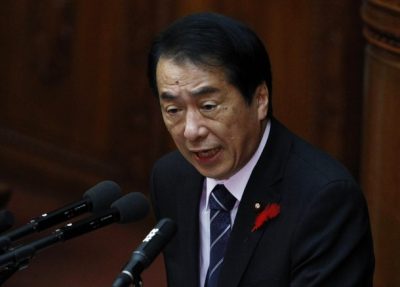These tensions prevent the DPJ from becoming a truly new political party, liberated from Liberal Democratic Party-style politics and the socialist/leftist mindset toward the security alliance with the US.
The Twin Legacies
Last August Japanese voters gave a decisive ‘no’ to the LDP but that wasn’t an enthusiastic ‘yes’ to the DPJ. The new ruling party has struggled to convert these anti-LDP voters and get them to cast a vote of confidence for the DPJ. Sadly, the DPJ failed to secure a majority in the Upper House after the July mid-term elections. Without a majority in the two houses, the impact of the change of power diminishes.
There are three causes for this failure. First, Hatoyama Yukio, the DPJ’s first prime minister, bungled the issue of the relocation of the US Marines’ Futenma airbase in Okinawa by using it as the showcase to demonstrate how his administration would do things differently from the LDP. Second, allegations of dirty money haunt Ozawa Ichiro, undermining his image as an otherwise strong leader who orchestrated the change of power. The resignation of Hatoyama and Ozawa in May brought Kan to office. He initially inspired those disenchanted with the Hatoyama government, but Kan himself became the third factor by committing a tactical blunder in the election campaign: he mentioned a tax hike before the elections. These setbacks undermined coherence within the DPJ itself, especially after Ozawa, who controls the largest group in the party, decided to challenge Kan for party leadership.
The leadership race between Kan and Ozawa was, essentially, a choice between old style and new style politics. Grassroots party members and registered supporters overwhelmingly voted for Kan. More attuned to the views of the general public that wants stable leadership and a prime minister who believes in accountability and transparency, the grassroots rejected Ozawa. The people’s expectation of politics and politicians has decidedly shifted away from the old ways.
Farewell to Old Ghosts
Having cleared another hurdle in Japan’s democratic evolution and defeated Ozawa in his bid for power, one hopes that Kan can now last as prime minister for at least two years until the next party leader election, or even until the next general elections in 2013, if only to give the Japanese time to absorb and adjust to the shock of the change of power. While Kan’s leadership remains untested, he is not in an enviable position; Ozawa is not known to concede easily and he still commands sizeable influence within the party. And, there is no policy issue that can be singled out as more important than others, from the economy or social welfare to foreign and security policy. The Cabinet must be an all-rounder.
Nevertheless, if Kan has one crucial job, it is to forge a DPJ foreign and security policy identity. After having picked the anti-US bases Social Democratic Party (SDP) as a coalition partner, the ghostly re-appearance of the old ‘left-right axis’ in the context of coalition politics over Futenma exposed the DPJ’s inability to build a consensus on foreign and security policy issues, such as the constitutional restraint on the right to collective defence or Japan’s role in the security alliance with the US.
Defence policy and alliance politics in post-war Japan has never been the product of open and democratic decision-making, particularly during the Cold War, in part because Japanese security was (and still is) ultimately dependent on the US, but also because the LDP’s old nemesis, the Socialist Party, was ideologically incapable of recognising the alliance or of accepting the Self-Defence Forces (SDF) as constitutional. As a party formed by defectors from these two parties (the Socialists and the LDP), united in opposition to LDP dominance, the DPJ has internalised that left-right divide. Had the DPJ consolidated its position on security policy and offered its vision of a new security identity for Japan before it took charge (and it had ample time to do so), Hatoyama might not have looked suspiciously anti-alliance.
Japan can no longer afford to keep the dichotomies — between militarists and pacifists, conservatives and leftist, or pro-US and pro-UN — that keep it from building a national consensus on Japan’s core security identity, one that does not sway from one administration to another. This is all the more imperative if changes of power are to become regular occurrences in Japanese democracy.
Haruko Satoh was formerly a research fellow at the Japan Institute of International Affairs and an associate fellow at Chatham House. An earlier version of this article appeared as PacNet No. 42 (Sept. 23, 2010), published by the Pacific Forum CSIS.

